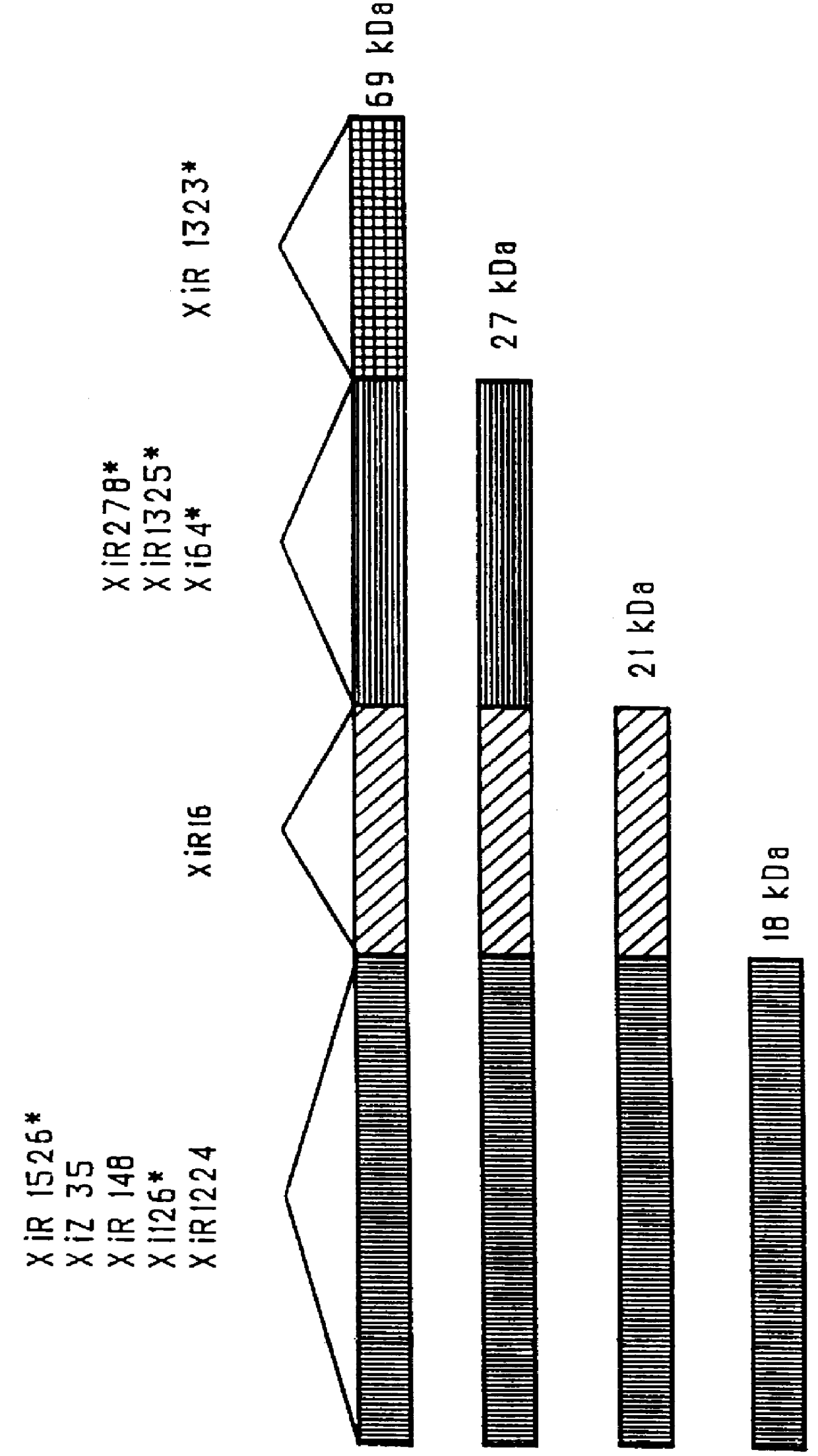Mucosal administration of pneumococcal antigens
a technology of pneumococcal antigen and mucosal administration, which is applied in the direction of respiratory disorders, peptides, drug compositions, etc., can solve the problems of nasopharynx organisms giving rise to symptomatic sinusitis or middle ear infections, and the present prospects of pneumococcal disease are problematic, and achieve good mucosal immunogen, enhance the mucosal immunogenicity of other soluble antigens, and a gal
- Summary
- Abstract
- Description
- Claims
- Application Information
AI Technical Summary
Benefits of technology
Problems solved by technology
Method used
Image
Examples
example 1
This Example illustrates the provision of a model for pneumococcal carriage in mice.
Three different strains of S. pneumoniae (L82106, BG9163 and BG8826) were inoculated in 12 .mu.l volumes into the nares of CBA mice over a period of several minutes using slow delivery from a 20 .mu.l Pipetman. After 7 days, the mice were sacrificed and their trachea was cut at the top of the throat. 50 .mu.l of fluid was instilled and washed out through the nares. The area washed represents the pharynx and nasal tissues. Each of these strains was able to establish carriage in this tissue without concomitant sepsis or bacteremia. The results are shown in the following Table I:
After the first day after infection, it was also observed some low numbers of pneumococci in the lung and blood of occasional mice. Later in the infections, pneumococci were only recovered from the nasal wash. Colonization appeared to be stable for at least 3 weeks, as shown by the result in the following Table II.
To identify th...
example 2
This Example illustrates elicitation of protection against carriage by immunization with heat killed pneumococci and with a lysate of pneumococci.
CBA mice were immunized i.n. with 2.times.10.sup.7 heat-killed (60.degree. C.) L82016 or an equal number of autolysed L82016. Mice were given three i.n. immunizations spaced 10 days apart. The first two injections were given with 5 .mu.g of CTB. Two weeks after the last injection the mice were challenged with 10.sup.8 CFU of live L82016. The results obtained are set forth in the following Table III:
example 3
This Example illustrates protection against carriage by immunization with isolated and purified PspA.
CBA / N mice at 10 weeks of age were immunized with 12 .mu.l of a solution of L82016 PspA (containing about 1 .mu.g PspA) plus 5 .mu.g of CTB, or a control preparation from PspA.sup.- strains WG44.1 (also with 5 .mu.g of CTB). This preparation was used to control for the possibility that some pneumococcal contaminant other than PspA might have elicited the protection seen. The PspA used was purified over a choline-Sepharose column. Other controls included mice immunized with CTB alone and unimmunized mice. Two of the control mice died of pneumococcal sepsis following challenge with 10.sup.8 L82016. The other control mice all had detectable pneumococci in their nasal washes 7 days post infection. None of the PspA immunized mice had any pneumococci in their nasal washes at 7 days post infection. Of the 7 surviving control mice, all of which carried pneumococci in their nasal cavity, only...
PUM
| Property | Measurement | Unit |
|---|---|---|
| volumes | aaaaa | aaaaa |
| volumes | aaaaa | aaaaa |
| ionic strength | aaaaa | aaaaa |
Abstract
Description
Claims
Application Information
 Login to View More
Login to View More - R&D
- Intellectual Property
- Life Sciences
- Materials
- Tech Scout
- Unparalleled Data Quality
- Higher Quality Content
- 60% Fewer Hallucinations
Browse by: Latest US Patents, China's latest patents, Technical Efficacy Thesaurus, Application Domain, Technology Topic, Popular Technical Reports.
© 2025 PatSnap. All rights reserved.Legal|Privacy policy|Modern Slavery Act Transparency Statement|Sitemap|About US| Contact US: help@patsnap.com



